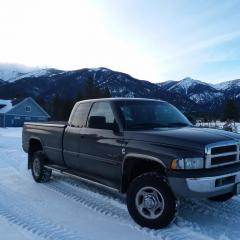For Sale - 2006 Dodge Ram 2500- Flatbed for long box bed Winch bumper Flat Bed for Long Box 3rd generation Cummins Tootlbox are included with key I have a flatbed for 3rd Generation dodge Cummins. This flatbed comes with a gooseneck hitch already in the bed. The winch bumper is part of the set. Tootlbox have a key to lock and unlock all box a single key. There is rust starting and electrical will have to be sorted out on your own.
-
Price: $1,000.00
-
Location: New Meadows, Idaho
 Tractorman 2 posts
Tractorman 2 posts Linux 1 post
Linux 1 post

I'm working on my VP44 and ECM projects and need to know how much fuel is actually injected by the injection pump.
This is so I can calculate a fuel rate in milli Liters for determining engine load and also for the overhead trip, mileage display
computer. So i dug out my old VP44 core and did some measurements. I thought I would share what I found and get some
confirmation or feedback.
This is a SO pump with three injection plungers they are 7.3 mm diameter. The cam donut has a thickness of 10.5 mm at the maximum inward
point and a thickness of 7.1 mm at the maximum outward point. So 10.5 - 7.1 = 3.4 mm of stroke. I don't have an ultra precise way to
measure the stroke. I probably need to have the pump all put together for that with a special instrument and rotor head fixture, but it's
probably pretty close. So 7.3 divide by 2 = 3.65 mm radius times 3.14 (pi) times 3.4 stroke = volume 39 milli liter per plunger, times 3 = 117 ml.
That's the theoretical maximum injection volume without injector or line losses. So 3 injections per crankshaft revolution is 351 ml. times 1000 RPM
is 351000 ml. There are 1,000,000 ml in a liter so 0.351 liters per minute at 1000 RPM. At 2849 RPM that's 1 liter / minute.
The vane pump has to fill the plungers and it continues pumping to the tank while the plungers are injecting so that means it needs to
pump at least twice the amount as injected. That needs 0.702 liters / minute @ 1000 RPM and 2.8 liters @ 4000 RPM.
1 liter is 0.264 gallon so 0.74 gallons per minute @ 4000 RPM. that's 44.5 gallons per hour. The lift pump would need to be 2 to 3 times that to maintain a good working pressure at the VP. Does the math seem right?